British Baker asked some of the biggest names in cake decorating to give their views on the trends and techniques likely to shape the craft in the future.
Sophie Cabot, designer of Princess Eugenie’s and Jack Brooksbank’s wedding cake: Traditional sugar work, such as flowers, is becoming more popular as clients recognise this makes cakes unique to them – and understand that it doesn’t have to be on a fruit cake.
Mixing hand-painting and sugar work is also fashionable, with the combination of 2D and 3D work bringing a wonderfully creative, modern, yet traditional feel.
The naked cake phase could be subsiding, as clients seeking a rustic look lean towards a buttercream finish instead.
For the royal wedding cake I used traditional techniques, with different textures, autumnal foliage, berries and a mix of seasonal colouring. A couple of little white flowers were made, but it was predominantly leaves, which is unusual.
Emma Stewart, founder, Truly Scrumptious Cakes: I see darker, richer tones such as navy, deep burgundy and even black becoming more popular – especially as an icing colour. Colour is so important, particularly for floral designs, and the greenery of this year will continue into next.
Textures started to trend more in 2018 and I see this carrying on through to 2019, with a greater emphasis on mixing and layering textures to add depth to designs.
Billy McCrindle, trade marketing manager, Renshaw: Vivid colours are less popular now, as cake decorators are going for a more natural look. Bold and contrasting colours, all that shines and glitters are a key trend.
Jacqui Passmore, marketing manager UK & Ireland, Dawn Foods: Keeping ingredients as natural as possible – for example glossy icing made with natural colours – is one trend set to continue.
Botanical flavours are still big, as are fruits such as peach, pineapple, lemon and cherry. Subtle combinations – for example apple and cinnamon and toffee apple – will also prove popular.
Rosalind Miller, founder, Rosalind Miller Cakes: Whether it is fondant or buttercream icing, we predict an increase in textures that create a modern look. The distressed effects of concrete and stone will continue to be popular, particularly when contrasted against pastel-coloured icing and brighter accents.
Buttercream icing is continuing to grow in popularity since Harry and Meghan’s wedding cake, and new buttercream techniques are increasing in popularity. Using buttercream to create an abstract textured painted effect, almost like an oil paint, is a versatile and modern way to create patterns and floral designs on cakes. We’re also seeing royal icing used as a paint – by using a pallet knife or a brush.
Fondant icing remains popular, with a complete departure from rounded edged cakes in favour of sharp edges. The perfect smooth surface of fondant is ideal for painting directly onto.
Kirsty Graham, marketing executive, Cake Décor: The growing popularity of cocktail flavours will shape the icings market as consumers search for exotic flavours to treat their taste buds and remind them of their favourite tipples – perfect for impressing guests at parties and events.
Gone are the days of perfectly smooth cakes; rustic textures in buttercream icing are gaining more popularity as consumers are drawn to cakes that look homemade yet still incredibly chic. If it’s for a special event, we love rustic textured cakes that have been finished with a layer of glitter.
Whether it’s vibrant rainbow colours or pastel hues, consumers will be drawn to eye-catching, colourful bakes.
What makes a BIA winner?
Elaine Hamey spent 90 hours working on this ocean-themed masterpiece, which won the Celebration Cake Business of the Year at this year’s Baking Industry Awards (BIA).
Starting with a dummy cake base, as specified in the entry rules, Hamey began by covering this in rock sugar, made by boiling water and sugar to 180˚C.
“We covered the board and the base of the cake in rock sugar, which, when it cools, forms a rock effect that can be broken down,” she says.
For the pieces of coral, Hamey looked to photographs of the Great Barrier Reef for inspiration.
“I used white chocolate modelling paste to make most of the coral, before airbrushing in different colours and dusting with edible food dust.” Other bits of coral were royal icing that had been made into lace sheets and cut to size.
Hamey also created a crab, octopus and turtle.
“At the base of the cake, I had a crab modelled out of flour and modelling paste. I formed a shell and made each element separately, before drying it out, placing the pieces together and airbrushing. I added texture with indentations, royal iced dots and tiny bits of shell, which I stuck to the top. For the pincers, I piped tiny spikes on to the ends using royal icing.”
Hamey copied the octopus from one of her son’s books. “I made the main body and then sat for hours indenting a number two nozzle into it to add texture, and then again when it had been airbrushed,” she says. The tentacles were made of flour and modelling paste, and left to dry for two weeks before indenting. The suckers were made from chocolate modelling paste and were stuck on individually with edible glue.
For the turtle at the top of the cake, Hamey started by making the basic shape in polystyrene, which she worked around with flour and modelling paste.
“It was important the turtle was hollow, so that it was a light weight at the top of the cake,” she explains. “Each element was created separately and put together once it had dried.
“I wanted the texture of the arms and legs to be right, so I spent a lot of time getting the rough skin effect and I hand-painted the shell with food colouring.”






















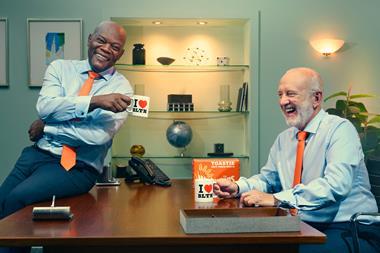
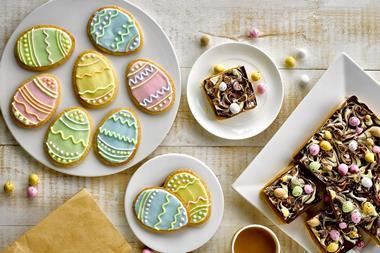
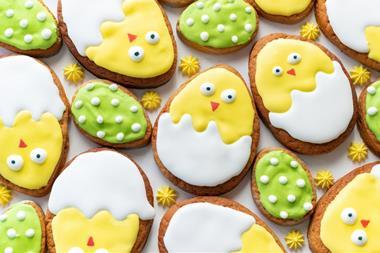
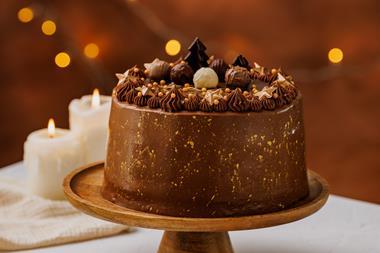
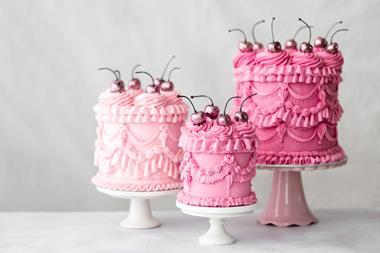


No comments yet